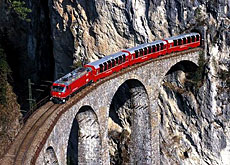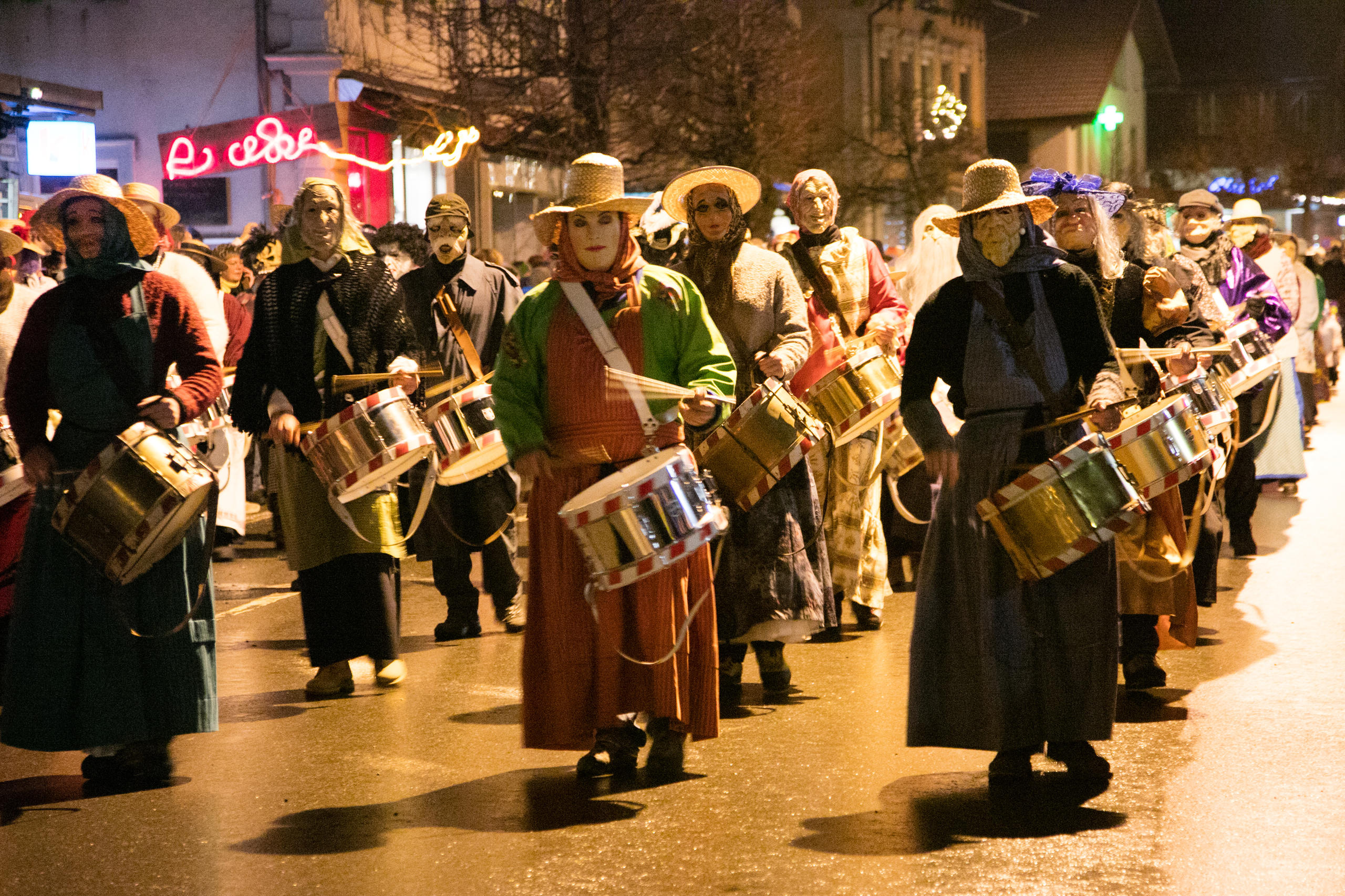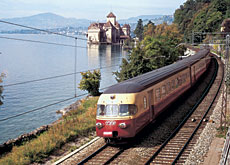Little train still amazes after 100 years

Rhaetian Railway is marking the centenary of the spectacular Albula and Ruinaulta lines by putting legendary locomotives and classic carriages back in service.
But, as swissinfo discovered, the stunning scenery along the routes in south-eastern Switzerland is still the main attraction.
When the lines were completed exactly 100 years ago, the public was finally able to marvel at a feat of engineering that surmounted many natural obstacles.
Constructors had to build 69 bridges and towering viaducts over deep gorges and rivers, dig 41 tunnels and lay countless kilometres of spiral and horseshoe track to overcome more than 1,000 metres of altitude.
It is these natural barriers and the engineering that triumphed over them that have made the railway lines among the most spectacular in the world.
“I think the people that planned and built the lines had a good understanding of nature,” says Gion Caprez, a train driver for the railway who also doubles as the company’s historian.
Unspoilt landscape
“They knew how to build a railway through a wild environment and still leave it more or less unspoilt.”
Both lines begin in Chur, the capital of the canton of Graubünden.
The Albula line connects Chur with St Moritz in the Upper Engadine valley, while the Ruinaulta heads west through the wild Rhine Gorge.
This year, a 1920s “crocodile” locomotive is pulling heritage coaches along the Albula route.
Passengers choosing to travel along this line are treated to breathtaking views of the gorges as they are carried across stone viaducts.
The train rises slowly above picture postcard villages as it weaves its way along the many horseshoe and spiral stretches of track heading for the Albula Tunnel at the top of the pass.
It took more than 5,000 mainly Italian workers five years to complete the main stretch of the line from the village of Thusis, south of Chur, to Celerina just outside St Moritz.
Loss of life
It cost Swiss taxpayers SFr18 million ($13.35 million) and the lives of more than 20 workers to build what was essentially a railway for the rich – the only ones at the time who could afford to travel by train for a holiday in St Moritz.
“There were many deaths but it was not a bad workplace,” says Caprez, above the noise of the rumbling train.
“There were much worse construction sites. The Gotthard tunnel was a terribly disorganised and a terribly dangerous workplace.
“The Albula Tunnel and the construction sites here were naturally dangerous, but they were well organised and the employees were more or less well cared for.”
Swiss Grand Canyon
During the centenary year, tickets for the Ruinaulta line enable passengers to ride through the Rhine Gorge in open carriages.
Also called the Swiss Grand Canyon, the gorge is only accessible by kayak or train, which runs along the riverbank.
The bizarre rock formations of the canyon are the result of a prehistoric landslide and posed a different challenge for the railway builders.
Whereas stone quarries were built beside the route the Albula line would take, there was no solid rock in the gorge that could be used as a construction material.
“There is only crushed stone in the gorge, unsuitable for any construction work,” says Caprez.
“So they had to open quarries at both ends of the gorge and transport the building stones which they needed for bridges and walls by temporary railway to the gorge.”
Railway enthusiasts
Both the Albula and Ruinaulta routes are magnets for railway enthusiasts like Anthony Lambert, a British travel writer, who rates it as one of the world’s top train trips.
“For me the fascination is first and foremost the scenery,” he says.
“The line represents the perfect symbiosis between nature and technology,” comments Peter Bock, a railway journalist from Berlin. “It’s something you can’t find to this extent anywhere else in the world.”
“I’m never bored with the scenery,” adds Angelo Flisch, our train driver for the day as we pass a lonely wooden stationmaster’s house, dating back to the start of the 20th century.
“It changes all the time. It rains one day and when it clears, you suddenly discover that the mountains are covered with fresh snow. Then you have to work an early shift, which is the best time to see wildlife.
“If you want my opinion, the scenery is really fantastic.”
swissinfo, Dale Bechtel in Graubünden
Special trains will run on the Albula and Ruinaulta lines every weekend until mid-October.
A heritage train with first, second and third-class coaches will travel the Albula line between Chur and Samedan on Saturdays.
A refurbished Pullman Express from the 1930s will run the line on Sundays.
There is also a railway theme trail which runs parallel to the Albula line, leading from Preda down to Bergun.
An open carriage will be added to many of the trains on the Ruinaulta route (check the Rhaetian Railway website for details).
It took five years to complete the Albula and Ruinaulta railway lines.
The most spectacular part of the Albula line runs from the village of Bergun, at 1,300 metres above sea level, to Preda (1,800m).
Workers had to lay nearly 13 kilometres of track, build seven viaducts and five horseshoe tunnels on this stretch alone.
There is a bridge almost every kilometre along the difficult terrain of the 19-kilometre Ruinaulta line.
The popular Glacier Express between Zermatt and St Moritz travels along both the Albula and Ruinaulta lines.

In compliance with the JTI standards
More: SWI swissinfo.ch certified by the Journalism Trust Initiative











You can find an overview of ongoing debates with our journalists here . Please join us!
If you want to start a conversation about a topic raised in this article or want to report factual errors, email us at english@swissinfo.ch.